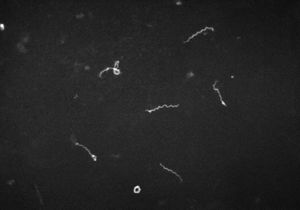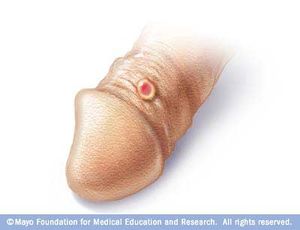The History and Transmission of Treponema pallidum; Syphilis: Difference between revisions
No edit summary |
No edit summary |
||
| Line 28: | Line 28: | ||
<br><br>A citation code consists of a hyperlinked reference within "ref" begin and end codes. | <br><br>A citation code consists of a hyperlinked reference within "ref" begin and end codes. | ||
== | ==History and Discovery== | ||
Include some current research, with at least one figure showing data.<br> | Include some current research, with at least one figure showing data.<br> | ||
<br> | <br> | ||
[[Image:Schauddin.jpg|thumb|300px|right|Figure 2. A picture of Fritz Schaudinn the zoologist credited with the discovery of <i>Treponema pallidum<i/> as being the etiological agent for syphilis. <i>Treponema pallidum<i/> the The [http://http://www.elsevier.es/imatges/304/304v14n57/grande/304v14n57-90184431fig5.jpg].]] | |||
Every point of information REQUIRES CITATION using the citation tool shown above. | Every point of information REQUIRES CITATION using the citation tool shown above. | ||
| Line 40: | Line 41: | ||
Include some current research, with at least one figure showing data.<br> | Include some current research, with at least one figure showing data.<br> | ||
<br> | <br> | ||
[[Image:Chancre.jpg|thumb|300px|right|Figure | [[Image:Chancre.jpg|thumb|300px|right|Figure 3. A cartoon of a chancre on the penis caused by <i>Treponema pallidum<i/> via intercourse. This is one of the first signs associated the primary stage of syphilis. Chancres are not exclusive to the genitals they can appear on all parts of the body through which <i>Treponema pallidum<i/> entered. The cartoon is courtesy of the Mayo Foundation for Medical Education and Research.[http://http://www.drugs.com/mcd/syphilis].]] | ||
==Section 4== | ==Section 4== | ||
Revision as of 04:02, 26 April 2016
Classification
• Kingdom: Bacteria
• Phylum: Spirochaetae
• Class: Spirochaetes
• Order: Spirochaetales
• Family: Spirochaetacecae
• Genus: Treponema

By: Marcus Townsend
At right is a sample image insertion. It works for any image uploaded anywhere to MicrobeWiki.
The insertion code consists of:
Double brackets: [[
Filename: PHIL_1181_lores.jpg
Thumbnail status: |thumb|
Pixel size: |300px|
Placement on page: |right|
Legend/credit: Electron micrograph of the Ebola Zaire virus. This was the first photo ever taken of the virus, on 10/13/1976. By Dr. F.A. Murphy, now at U.C. Davis, then at the CDC.
Closed double brackets: ]]
Other examples:
Bold
Italic
Subscript: H2O
Superscript: Fe3+
Introduce the topic of your paper. What is your research question? What experiments have addressed your question? Applications for medicine and/or environment?
Sample citations: [1]
[2]
A citation code consists of a hyperlinked reference within "ref" begin and end codes.
History and Discovery
Include some current research, with at least one figure showing data.
Every point of information REQUIRES CITATION using the citation tool shown above.
Section 2
Include some current research, with at least one figure showing data.
Transmission and Symptoms
Include some current research, with at least one figure showing data.

Section 4
Conclusion
References
Authored for BIOL 238 Microbiology, taught by Joan Slonczewski, 2016, Kenyon College.
